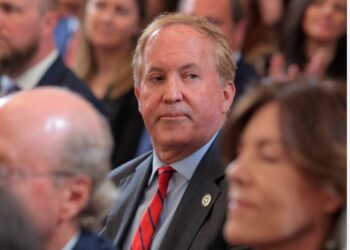Pushing for Electrification, But Creating a Supply Hole
In a Friday conversation on the WarRoo between Ben Harnwell and energy expert Dave Walsh, Walsh outlined how Democratic policies drive a looming energy shortfall. He highlighted the closure of reliable energy sources, like coal and nuclear plants, as a disaster waiting to happen, even as the Biden administration pushes for full and increased electrification. Democrats, Walsh told Harnwell, demand the unreliable performance of renewables, combined with the reduction of base-load capacity, which is leading to skyrocketing energy prices and severe shortages across the United States.
The Push for Electrification Meets Energy Shortfalls
Dave Walsh clarified that Kamala Harris and Joe Biden’s push for full electrification directly conflicts with their energy policies. Over the past ten years, Walsh said, the U.S. has shut down nearly 162,000 gigawatts of coal and nuclear capacity, leaving a gaping hole in the country’s energy supply. As states attempt to transition to renewable energy sources like wind and solar, Walsh noted that these technologies are only operational for a fraction of the day—solar for 5 to 6 hours and wind for about 7 hours. These renewables cannot meet the growing power demand, which is particularly concerning as electrification efforts require even more energy than before. In places like Virginia, demand is growing at a rate of 7% annually, driven mainly by energy-hungry server centers.
Walsh is concerned that this energy shortfall will only worsen under Democrats, pointing to ongoing capacity reductions. Renewable energy, which Democrats say is the solution, isn’t enough to fill that gap. Without the base-load energy that coal and nuclear provide, the grid is left vulnerable to shortages, especially as the electricity demand continues to rise.
Democrats’ Overregulation and the Decline of Nuclear Power
According to Walsh, the problem lies in Democratic energy policies that have aggressively targeted traditional energy sources for destruction. He explained that nuclear power, a crucial continuous energy source, has been decimated due to state-by-state regulations pushed by Democrats. These policies have made it difficult to build new nuclear plants or even maintain existing ones. Walsh pointed out that in the past 30 years, only one nuclear plant has been added to the U.S. energy grid, while 30 plants have been shut down. This drastic reduction in nuclear capacity has contributed to the energy shortage.
Walsh also compared the U.S. to China, highlighting that while U.S. energy consumption has flatlined over the past 15 years, China’s consumption has doubled. China now consumes 81% more total energy than the U.S. Walsh argued that this disparity is primarily due to America’s overregulation of its energy sector. While China continues to build new energy infrastructure, the U.S. is lagging, hamstrung by regulatory hurdles that prevent necessary expansions in nuclear and other reliable energy sources.
Rising Costs and Worsening Shortages
The consequences of these energy policies are already evident in rising costs and shortages across the country. Walsh pointed to the Southeastern United States, where energy prices have surged by up to 800%. He explained that these price increases directly result from energy companies being forced to bid higher for future energy capacity. The capacity auctions, which determine how much power will be available three years in advance, have seen a tenfold increase in costs, largely due to the closure of nuclear and coal plants.
As demand grows and supply shrinks, Walsh warned that energy costs will continue to rise. Electricity prices have increased by 30% across the U.S. during Biden’s first four years in office. Without a significant shift in policy, Walsh predicted that these prices would more than double over the next few years. This is particularly alarming given that the administration is pushing for the electrification of everything, from cars to household appliances, without ensuring the grid can handle the additional load.
Walsh concluded that these shortages and price hikes directly result from a misguided energy strategy that prioritizes ideology over practical solutions. While possibly well-intentioned, the focus on renewable energy cannot meet the country’s growing energy needs without the support of reliable, continuous energy sources like nuclear and coal. Unless changes are made to reverse these policies, the U.S. will face even more severe shortages and crippling energy prices in the years ahead.
For more of our coverage from Dave Walsh:
Kamala Harris’s Energy Plan Mirrors CA Blackouts: Power Outages, High Costs, and Reliance on Foreign Imports
Energy Policy that Helps CCP Under Scrutiny: Harris’s Approach to Fracking Slammed
For more context from Walsh, watch this full segment from Friday’s WarRoom:





There is a direct correlation between units of energy consumed and a countries GDP. If your GDP is going to grow, you need more energy to consume and likewise if you constrain or interrupt the availability of energy, GDP will decline.